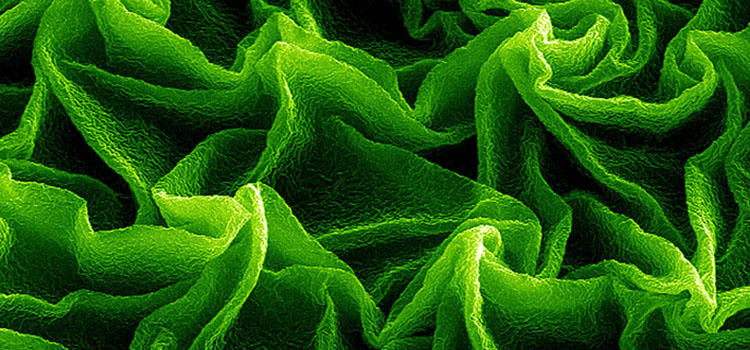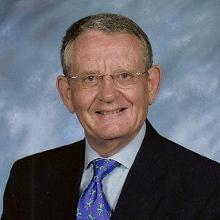Research Projects Reveal How Wrinkles Form

Changyong Cao and Xuanhe Zhao
(Inside Science) -- From raisins to fingerprints, and from tree bark to the surface of the brain, wrinkles appear throughout nature. But scientists have struggled to explain how wrinkles form.
Now two independent research teams at the Massachusetts Institute of Technology in Cambridge have developed key insights into the process.
One group has developed a mathematical theory, confirmed experimentally, that predicts how wrinkles take shape on curved surfaces. The other explains in more general terms how layered materials form different types of wrinkly patterns.
Taken together, the new insights promise to improve understanding of biological organisms and to lead to the creation of objects with complex shapes in industries such as electronics.
Wrinkling occurs when different layers of material come under stress.
"If you look at skin, there's a harder layer of tissue, and underneath is a softer layer, and you see these wrinkling patterns that make fingerprints," said Jörn Dunkel, an assistant mathematics professor at MIT.
A study of air resistance by Pedro Reis, an associate professor of civil engineering at MIT, stimulated the research by Dunkel's team.
Reis used ping-pong-sized balls made of polymers and consisting of a soft inner core and a harder surface layer. He noted that as air was slowly sucked out of the balls, their surfaces began to dimple. They first formed a pattern of regular hexagons, but that gave way to a more convoluted configuration that resembled fingerprints.
To explain the process, Dunkel and Norbert Stoop, a postdoctoral student working with Dunkel, started with elasticity theory, a complex set of equations that deals with materials that deform when stressed.
"We simplified the equations significantly to arrive at our effective equation for wrinkling – an equation that was simpler to analyze and resolve," Stoop said.
The wrinkling pattern that occurs on a surface depends on the types of stretching and bending involved. The equation the team developed, Dunkel said, "predicts how the patterns evolve, depending on the forces that act on that surface."
Further studies showed that the team's theory accurately predicted the patterns produced in Reis's experiments, the team reports in the journal Nature Materials.
"For a long time this subject has been addressed only from an experimental point of view," said Stoop. "The theory has been lacking. We have shown the importance of curvature for wrinkling that has not been addressed before." The finding has particular value, he noted, in studies of friction on surfaces. “We have shown that when you change the curvature of an object, you change the pattern," he added.
In the other MIT project, associate professor of engineering Xuanhe Zhao and his postdoctoral student Qiming Wang attacked a more general problem in wrinkling science: Why layered materials form different types of wrinkly patterns when they shrink or stretch in ways that affect the layers differently.
A general understanding of that issue, they realized, would provide significant benefits in the design of materials, particularly involving surfaces with specific characteristics, such as high traction or the ability to shed water.
The two, who are also associated with Duke University in Durham, North Carolina, created what Wang calls "the first unified model that shows just how the properties of the individual layers, and the way in which they are bonded to each other, determines the exact form of the resulting texture."
That process started by classifying wrinkling patterns into specific categories. Those included creases, exemplified by the sharp indentations on the surface of the brain; "delaminated buckles," created when layers come apart, as on the bark of a tree; ridges, consisting of relatively narrow, spaced-out peaks; and plain old wrinkles, characterized by uniform, wavy shapes.
To make sense of the differences, the two researchers hit on the idea of viewing each outcome as a different "phase" of the layered material, in much the same way that the solid, liquid, and gaseous states represent different phases of individual compounds.
Zhao and Wang then created a three-dimensional diagram that indicates how the relationships among the expansion or shrinkage and the rigidity of layered materials, as well as the tightness of the bonds between the layers, leads to different wrinkling effects.
Using this phase diagram, Zhao said, "We can quantitatively predict which state a surface will fold into, so you can design the pattern you want." These same principles "apply to various length scales, from very small to very large," he added.
The two tested their model by comparing its predictions to a wide variety of different materials in the laboratory and to previously reported results. Their conclusion, published in the journal Scientific Reports: The model agrees very well with experimental data.
"The surprising thing," Zhao said, "is that with so many complicated shapes, now you can just use one system, one understanding" to explain the variations in wrinkling. "This is the simplest model that explains all these patterns," he added.
Both projects promise rewards, in the form of potential applications of the theoretical models.
The fresh mathematical understanding of wrinkling on curved surfaces could become a design tool for the creation of complex shapes for flexible electronic materials.
"This new theoretical framework could provide engineers with a predictive tool that can help them to design new functionally structured surfaces over a wide range of scales," Dunkel said.
Zhao and Wang, meanwhile, expect their model to improve understanding of patterns related to growth and aging in living organisms and to enable the design of materials for such applications as treating disease, culturing cells, and controlling the environment.
Remarkably, neither of the MIT teams knew of the other's research until their papers were published.
"It was a big surprise for us that [Zhao and Wang] were working on wrinkling," Stoop said.

